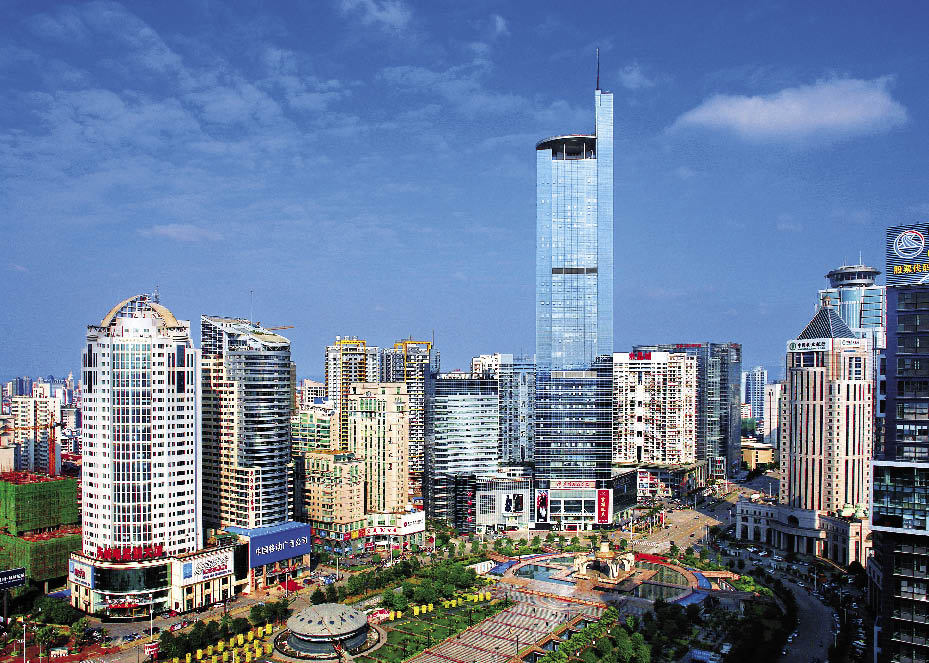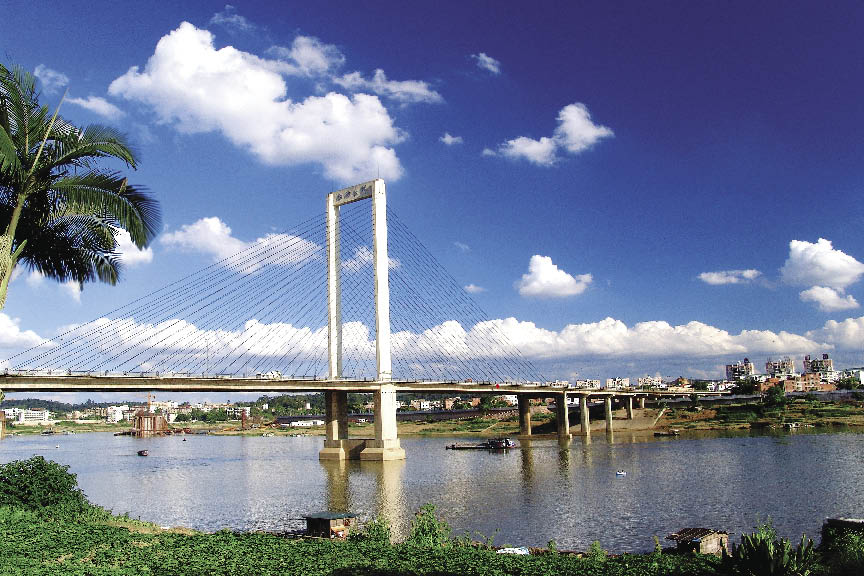|
Progress has left in its wake some spectacular buildings in Nanning, including a museum, an exhibition hall, a conference tower, the landmark King’s International Merchant Center and Asia’s largest water curtain movie screen. They are all ingeniously planned and designed to integrate seamlessly with local natural scenes, lending dynamism and sophistication to the raw beauty of its mountains and rivers.
The establishment of the China-ASEAN Free Trade Area makes possible the essential and complementary comforts of a strong economy, which Che Rongfu, Party secretary of Guangxi, believes is also vital to the quality of urban life. It is Nanning’s goal to provide its residents both a comfortable living environment and plenty of job opportunities. This seems assured. Nanning is a link between China and ASEAN members, an intersection between the economic zones of South China, Southwest China and ASEAN as well as a passage between the southeastern coasts and southwestern inlands. Being a focal point has endowed natives with an inherent openness and adaptability.
 |
| The skyline over Wuxiang Square.(Source: Lu Wenhu) |
Eyeing a bigger role in the regional economy, Nanning has taken measures to encourage local brands, support promising industries, and extend cooperation with ASEAN countries and neighboring regions including Hong Kong, Macao, Taiwan and the Pearl River Delta. Meanwhile, equal attention is given to social security and welfare sectors, including housing, employment and healthcare, to ensure the fruits of economic development are shared by everyone that makes up this community. So Nanning has been, and is, braving a swift transition in all aspects of its society with grace and stability.
Nanning’s economic policies proved prudent and potent during the global financial crisis. Despite strong fiscal headwinds, its GDP rose to RMB 149.24 billion in 2009, marking a gain of 15 percent over the previous year and an eighth two-digit growth year on year. Local investment in fixed assets for the first time exceeded RMB 100 billion. The per capita income of farmers also saw significant growth.
Sniffing the gold in the creation of the China-ASEAN Free Trade Area, Nanning kicked off a massive campaign this year to rejuvenate its industries, upgrade transport infrastructures, build new industrial parks, and balance the development in rural and urban areas.
After years of sowing seeds, the city of perennial spring is approaching the season of harvest.
 |
|
The Baisha Bridge. (Source: Zhou Shaonan) |
|
